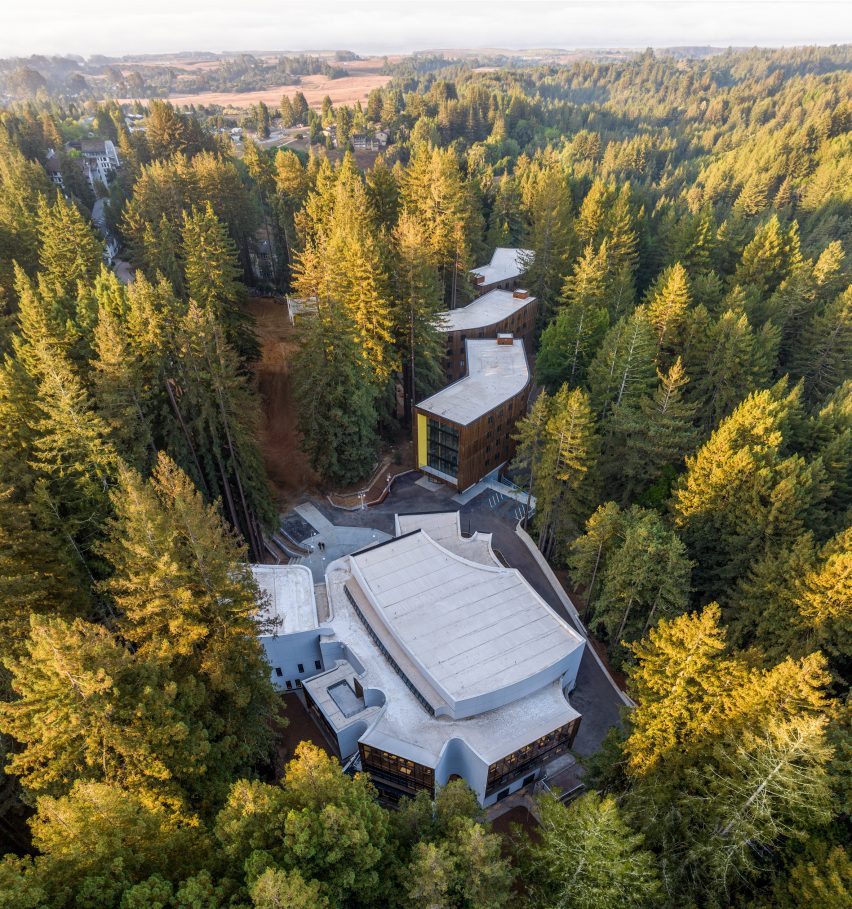
Chicago architecture firm Studio Gang expanded a college in California by adding large wooden structures derived from how fungi grow in the wild.
Kresge College is part of the University of California, Santa Cruz. Most of the campus was originally designed by American architects Charles Moore and William Turnbull in the early 1970s.
Studio Gang was tasked with expanding the project along the northwestern portion of its property, which is nestled in a dense Pacific forest.
Four buildings were designed to complement the existing buildings—California Moderne buildings with stucco walls and splashes of color—and the forest setting. All buildings feature concrete platforms supporting wooden load-bearing walls.
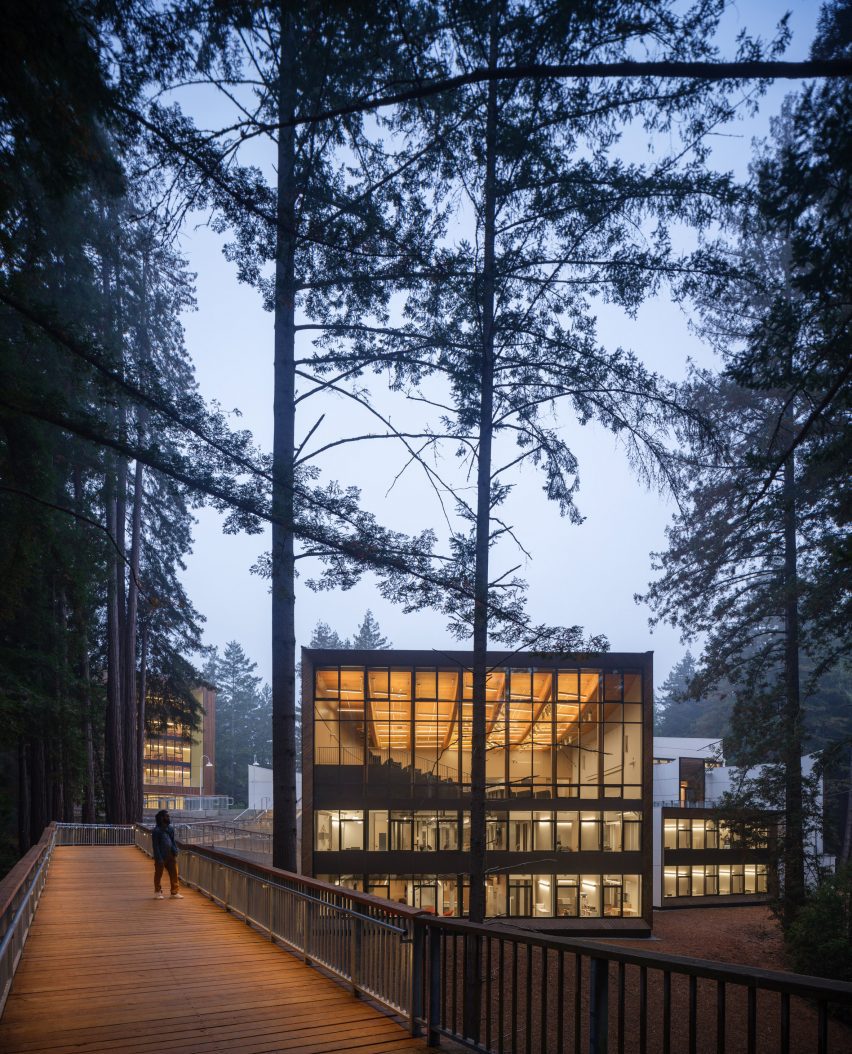
“Our goal was to add new qualities to the sense of place provided by Moore and Turnbull’s design, rather than to replicate the architecture,” said Jane Jung, founding studio principal.
“We wanted our expansion to maintain the qualities of surprise and free spirit that distinguished Kresge College, while at the same time opening it up to students of all abilities, the stunning natural environment of its location, and the greater university community beyond.”
The centerpiece of the expansion is an academic center with a series of protrusions that protrude asymmetrically from the core. Three simple arch-shaped structures were placed to the southeast to house the students.

Kresge College Academic Center is located on an uneven site next to a steep valley. To navigate the site, the studio used methods it said were inspired by the growth patterns of multi-pore fungi, by “going downhill and going outward” at the same time.
The center’s flared form was capped by a metal curtain wall, rendered in a pastel color to reflect the mid-century buildings, while the faces of each overhang featured floor-to-ceiling glass accented with wood.
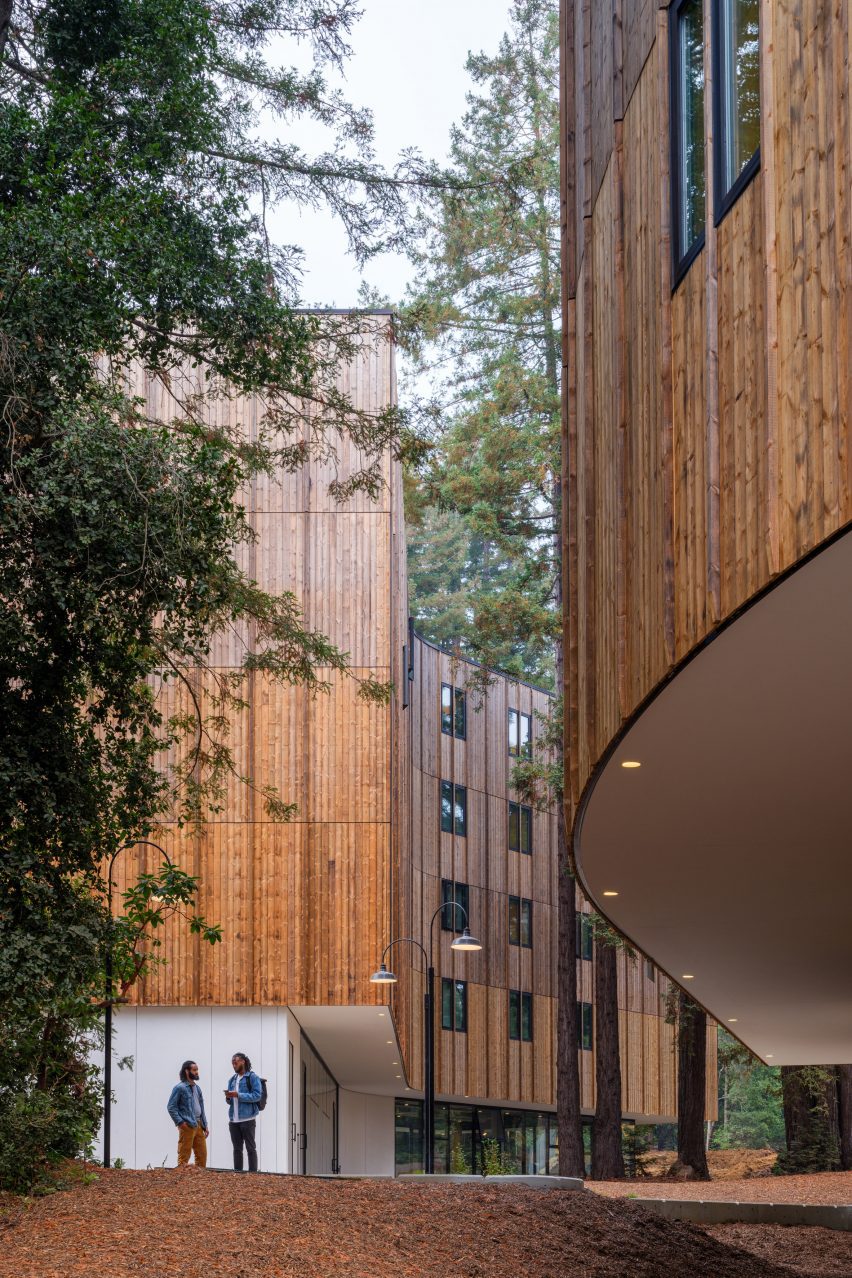
At the center is a large lecture hall, surrounded by a triangular atrium with smooth concrete walkways and elevated walkways connecting the four prominent spaces.
These buildings contain classrooms and use a three-story ramp aligned with the central two-story structure.
The largest of these protrusions features a smaller auditorium on the upper floor, with a roof that slopes up and out in the form of a large ledge.
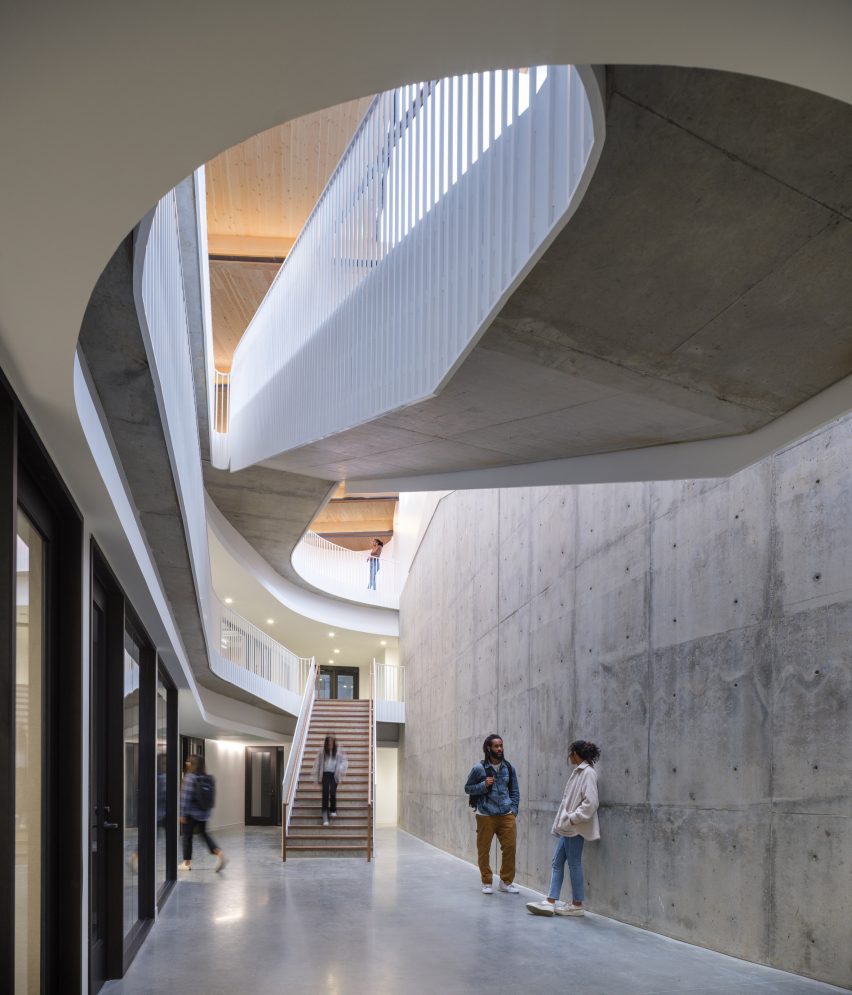
All of the smaller residential buildings are arch-shaped, a move the studio said was implemented to preserve as much of the site’s redwood tree groves as possible.
These buildings are five stories high and have a central core set back from the wood-clad exterior, with large window boxes at each end that create sheltered courtyards on the second floor.
The gaps between the window and the facade were painted bright yellow, matching the colors used in Moore and Turnbull’s designs.
Like the Academic Center, these structures have concrete platforms with wooden load-bearing walls. However, laminated ceilings were included, and in many places, these elements were left exposed.
The lower floors of these residential buildings are left open for social spaces and amenities, while the upper floors contain residences: about 100 students can live in each building.
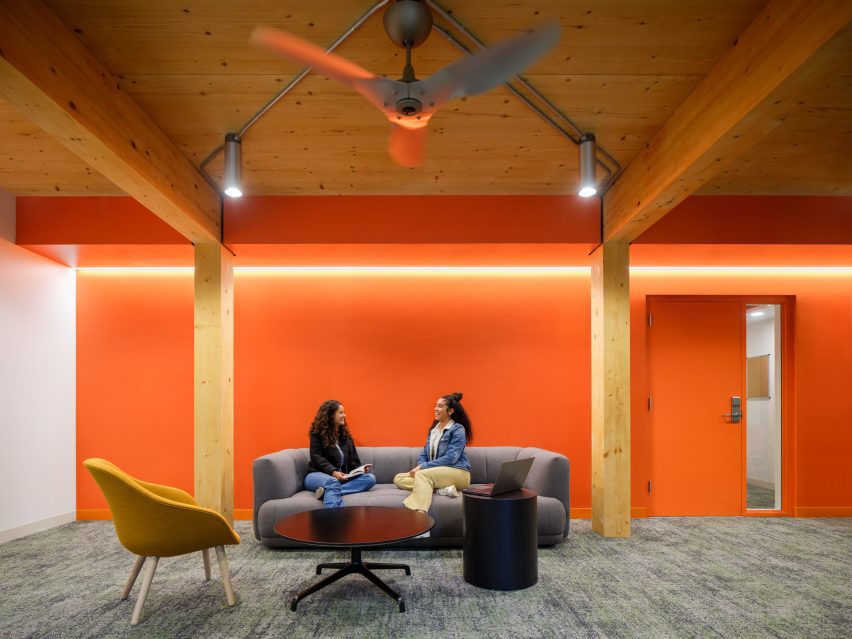
Studio Gang also made landscape interventions, restoring and widening the paths that already connect the campus and the long pedestrian bridge that crosses the valley adjacent to the Academic Center. It also added a plaza at the main entrance to the building.
Studio Gang completed a number of notable projects this year, including museum expansions in Arkansas and New York City. Kresge College is part of the studio’s move toward using more wood, and was chosen to complete a theater using this material in the Hudson Valley.
Photography by Jason O’Rear.
Project credits:
Design Engineer and Engineer of Record: Studio hall
contractor: Swinterton
Assistant engineer for the expansion plan: Designed by TEF
Interior Designer: Studio hall
Structural Engineer: Magnuson Klemencik Associates
sStructural Engineer : MME Civil + Structural Engineering
Landscape architect: Johnny L. Janicki & Associates Landscape Architects
Landscape architect: Cheryl Barton’s office
civil engineer: Sherwood Design Architects
MPVP: Entropy
Sustainability Advisor: Atelier Ten
Lighting consultant: Horton Liz Brogden Lighting Design
Voice Advisor: Salter
Envelope advisor: Simpson Gompertz and Heger
Determine path and graphics: Cheng + Snyder
Code consultant: Holmes fire
Quantity Surveyor: Directional logic
Accessibility Advisor: Jensen Hughes
Elevator Consultant: Elevator consulting partners
Technology Consultant: Tecom
Theater Consultant (for Kresge College Academic Center): Shalik Cooperative
Food service consultant (for residential buildings): Rica Design Studios
Studio Gang, a renowned architecture firm known for its innovative and sustainable designs, has been selected to lead the expansion of Kresge College in the Pacific Forest. This exciting project promises to integrate the natural surroundings with modern, functional housing for students. With Studio Gang at the helm, the expansion is expected to be a stunning addition to the college campus, showcasing their commitment to pushing the boundaries of traditional architecture while respecting the environment.

